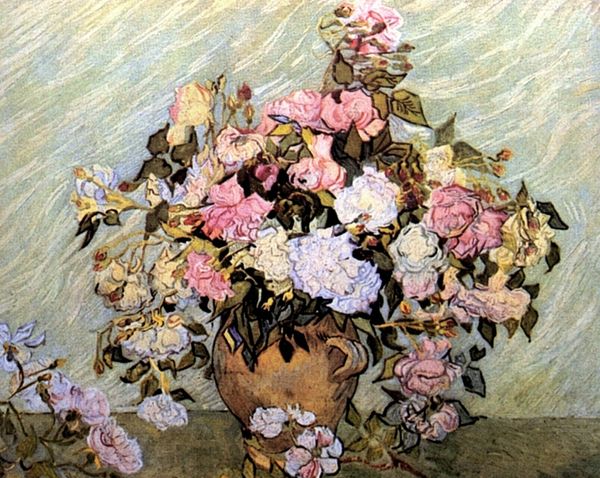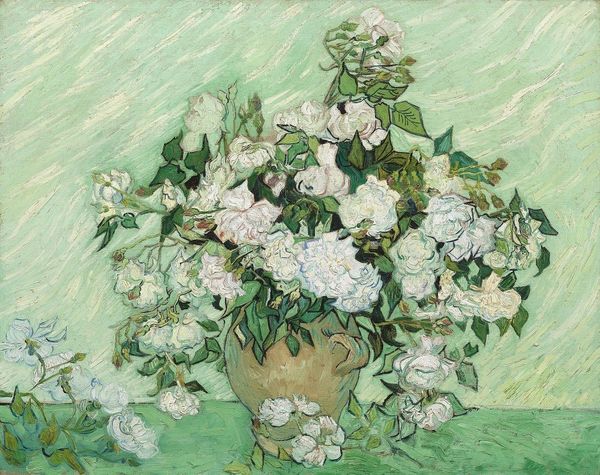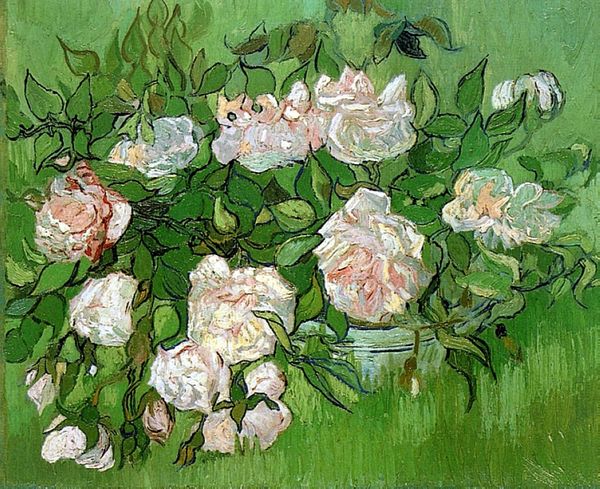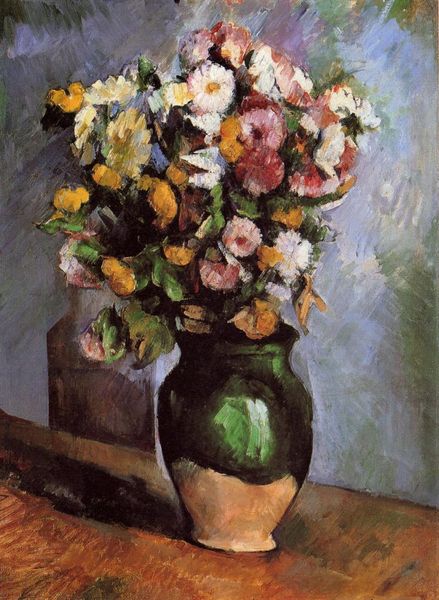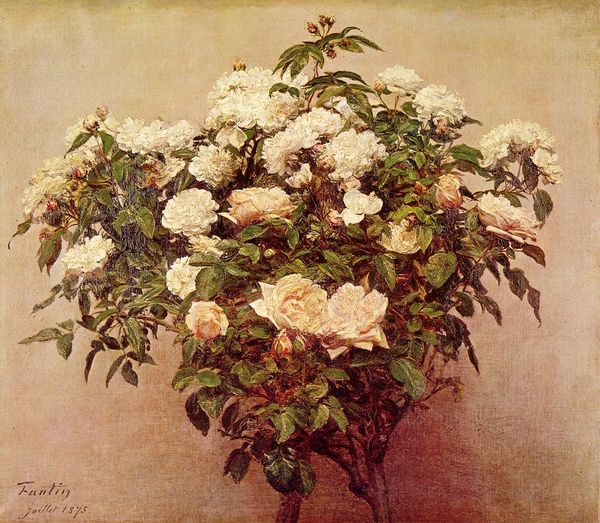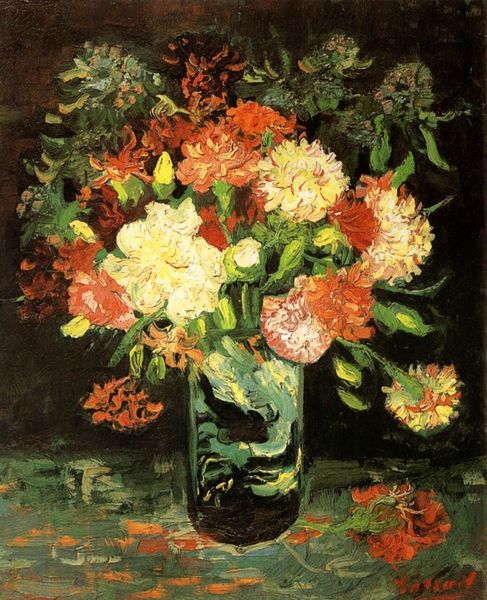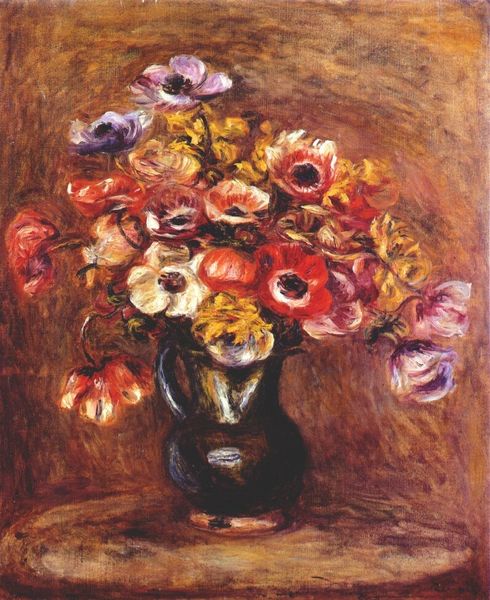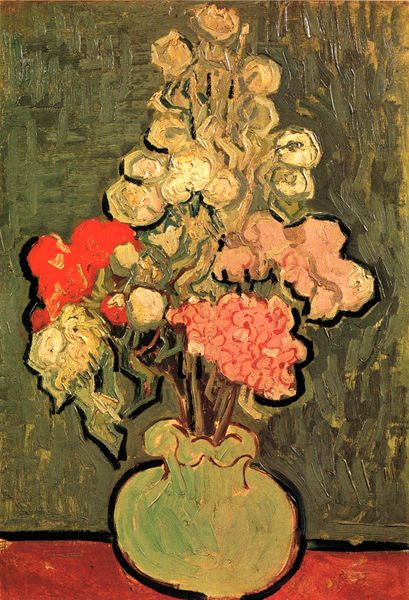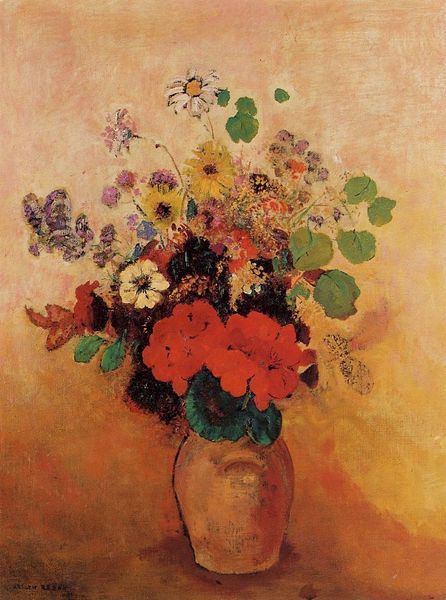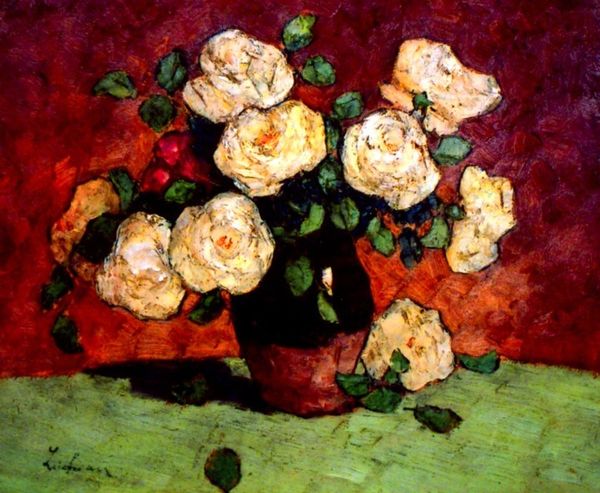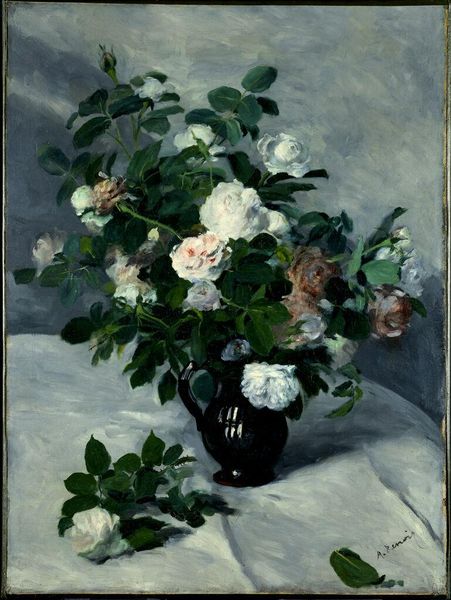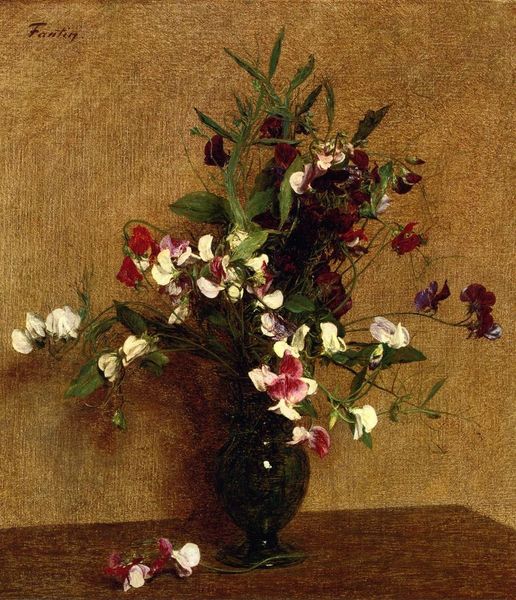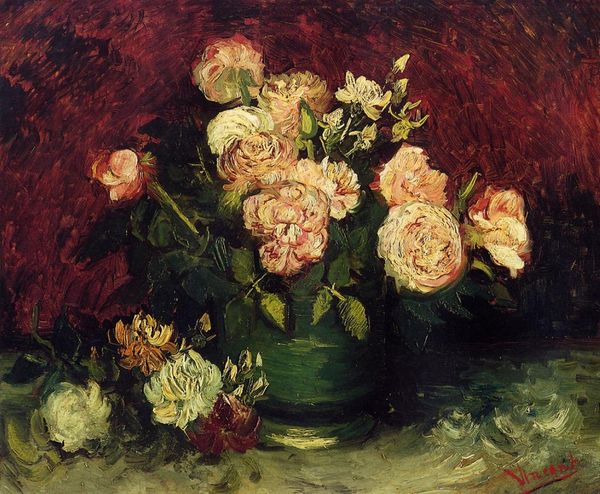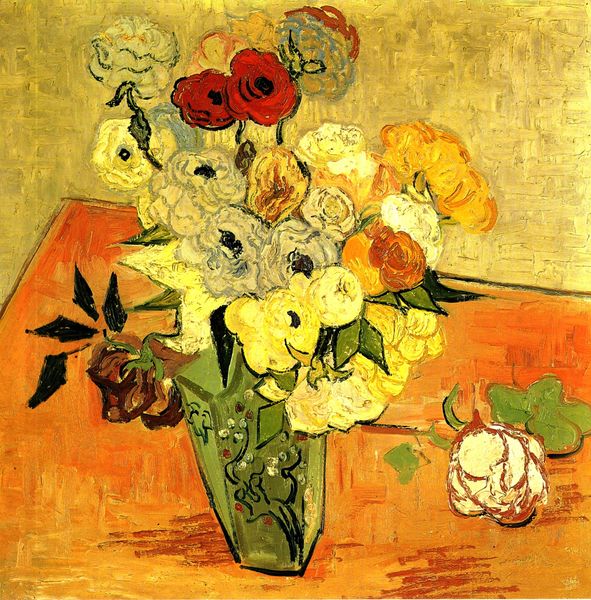
painting, oil-paint, impasto
#
garden
#
painting
#
oil-paint
#
landscape
#
flower
#
impasto
#
symbolism
#
post-impressionism
Dimensions: 92.6 x 73.7 cm
Copyright: Public domain
Curator: Let's turn our attention now to "A Vase of Roses," painted by Vincent van Gogh in 1890. A little bit of sunshine in a vase, if you ask me. Editor: Sunshine fading, perhaps? My first thought was how much the pale roses pop against that saturated green. There's a fragility here that feels, well, melancholic. It's interesting since it comes from an artist we commonly think of as vibrant. Curator: Absolutely, the vibrancy is still evident in the thick impasto technique Van Gogh employed here. The brushstrokes themselves are almost sculptural, like little mountains of paint conveying life, but also perhaps hinting at impermanence. Roses, especially, have a long association with beauty and its fleeting nature, what the Greeks referred to as *akmé* and *pompé*, splendor as its height. Editor: Yes, you can almost feel the wilting even as the paint is practically jumping off the canvas. But those strokes, I get the mountain metaphor. Like they're fighting against gravity, striving upwards even as they droop. Makes me wonder what Van Gogh was fighting against at that moment. Curator: Indeed. Painted during the artist's stay in Saint-Rémy, not long before his death, the roses become a compelling symbol. Remember that many cultures consider roses the symbol of death and resurrection and can often be found at funerals. I think there's a profound symbolic weight that goes beyond simply capturing the beauty of a floral arrangement, this being roses instead of a random flower in a field, say. Editor: It’s like a portrait of transience itself, painted with a desperate urgency. The vibrancy doesn't diminish that sense, though. Maybe it even intensifies it. You get this sense that he's not just painting roses, but mortality. Curator: And life and death exist in tandem, with art rendering even greater meaning to our lived realities and the cycles we inhabit. Editor: Exactly, like a memento mori in full bloom, almost screaming. Okay, I think I need to go stare at something completely different now, like one of his sunflowers. Curator: Agreed. This might be a painting that makes you think deeply. Thank you for your insights.
Comments
No comments
Be the first to comment and join the conversation on the ultimate creative platform.
